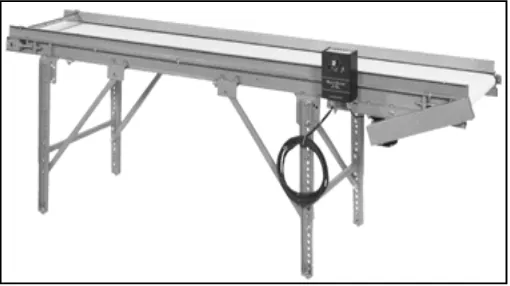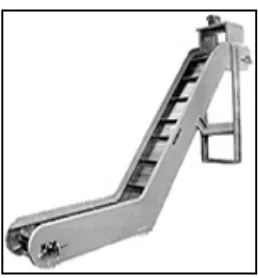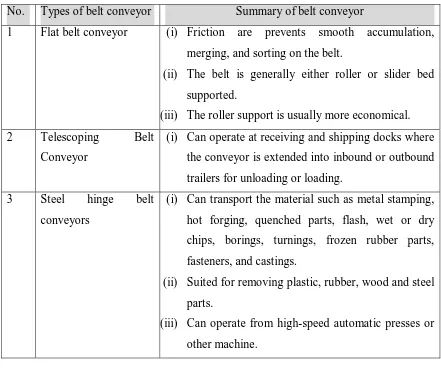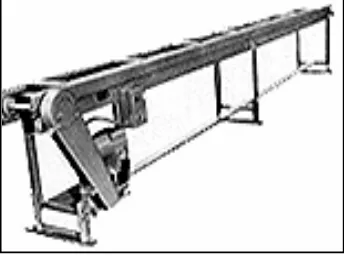UNIVERSITI TEKNIKAL MALAYSIA MELAKA
BORANG PENGESAHAN STATUS LAPORAN PSM
JUDUL: “SEMI-AUTOMATED DISPENSING MEDICINE SYSTEM”
SESI PENGAJIAN: 2/ 2008-200 9
Saya MOHD MUHAYIDDIN BIN MUHAMMAD
mengaku membenarkan t esis (PSM/ Sarj ana/ Dokt or Fal saf ah) ini disimpan di Perpust akaan Universit i Teknikal Mal aysia Mel aka (UTeM) dengan syarat -syarat kegunaan sepert i berikut :
1. Tesis adalah hak mil i k Universit i Teknikal Mal aysia Melaka dan penul i s.
2. Perpust akaan Universit i Teknikal Malaysia Mel aka dibenarkan membuat sal inan
unt uk t uj uan pengaj ian sahaj a dengan izin penul is.
3. Perpust akaan dibenarkan membuat sal inan t esis ini sebagai bahan pert ukaran
ant ara inst it usi pengaj ian t inggi. ol eh organisasi/ badan di mana penyel idikan dij al ankan)
DECLARATION
I hereby, declare that this report entitled “Semi-Automated Dispensing Medicine
System” is the result of my own research except as cited in the references.
Signature :
Author’s Name : Mohd Muhayiddin Bin Muhammad
ABSTRACT
In the automation industry, multiple automatic devices were used to ease and increase
the manufacturing process of a product with the help of the latest technology invention.
Nowadays, there are numbers of ’conveyor system’ available in the market and designed
in such a way to transport a product from a place to another place. This project is
designed to be used in Poliklinik Ayer Keroh, Melaka. Through this system, it will help
the pharmacy to increase the output level of productivity and transformed a traditional
system to more efficient and sytematic way of working. “Semi-automated dispensing
medicine system” will be used in the pharmacy to reduce the back and forth movements
of medical assistant from counter to the medicine rack. This system use conveyor as
medium to transport the medicine from rack to the counter by controller with
“programmable logic controller” base. This system will be manouvered by two medical
assistant. One of the person will be based at the counter and transferred the related
information to the other person at rack by using controller that readily available at the
counter. By using this semi-automated system, the medical assistant movement will be
greatly reduce to optimize the cycle time and indirectly reducing the patient waiting
time. This design is fully based on the layout that readily setup at the Poliklinik Ayer
ABSTRAK
Di dalam automasi industri, pelbagai peralatan automatik digunakan bagi memudahkan
serta mempercepatkan proses pengeluaran sesuatu produk dengan sokongan teknologi
moden. Pada masa kini, terdapat pelbagai jenis sistem “conveyor” dalam pasaran dan
telah direka dalam pelbagai bentuk untuk memindahkan sesuatu produk dari satu tempat
ke satu tempat yang lain. Projek ini direka untuk digunakan dalam farmasi Poliklinik
Ayer Keroh, Melaka. Sistem ini dapat membantu sesebuah farmasi meningkatkan
produktiviti pengeluaran dan menjadikan sesuatu sistem lebih sistematik berbanding
dengan penggunaan kaedah tradisional. “Semi-automated dispensing medicine system”
digunakan dalam farmasi untuk mengurangkan pergerakan pembantu farmasi bergerak
dari kaunter farmasi ke rak ubat berulang-alik bagi mengambil ubat untuk pesakit.
Sistem ini mengunakan “conveyor” untuk menghantar ubat dari rak ke kaunter yang
dikawal oleh alat kawalan iaitu “programmable logic controller”. Sistem ini
dikendalikan oleh dua orang pembantu farmasi. Seorang pembantu hanya menunggu di
kaunter dan memberi isyarat kepada pembantu yang berada di rak ubat dengan
menggunkan alat kawalan yang berada di kaunter. Manakala seorang lagi pembantu
farmasi hanya perlu menunggu isyarat yang diberikan di rak ubat. Dengan menggunakan
sistem separuh automatik ini, pergerakan pembantu farmasi dapat dikurangkan.
Rekabentuk sistem ini berpandukan susun atur yang sedia ada pada farmasi Poliklinik
ACKNOWLEDGEMENTS
Thanks to The God the All Mighty because with His Blessing, I managed to complete
my report for the final year project (PSM) involving the topic of semi-automated
dispensing medicine system.
I would like to convey my humble thanks to the university providing me the
opportunity and place to study with good condition for a student to have a pre-learning
center before getting involved the real career field. I would like to pay my thankfulness
to my parents that always behind me in providing me with the moral support and
everything they could.
To my lecturer that had been involved since early stage, thanks for all the
material and support especially my supervisor Pn. Silah Hayati Binti Kamsani in
TABLE OF CONTENTS
List of Abbreviations, Symbols, Specialized Nomenclature xi
2.7.2 Advantages of Relay 22
2.13.2 PLC System Block Diagram 34
2.13.3 PLC Application 37
2.13.4 Advantages of Programmable Logical Control 37
3. METHODOLOGY 39
3.1 Methodology Flow Chart 39
4. DESIGN AND DEVELOPMENT 48
4.1 Pharmacy Layout 48
4.2 Design of Mechanical Structure 50
4.2.1 Body or Frame of the Conveyor 50
4.4.1 Forward Reverse Motor Circuit 57
4.4.2 DC Motor Speed Controller 57
4.4.3 PLC Wiring Diagrams 59
4.5 Development of the Controller 61
4.5.1 PLC Communication Cable 62
4.5.2 Electrical Wiring 66
4.6 PLC Ladder Diagram 67
4.6.1 Operation of PLC Ladder Diagram 68
5. RESULT AND DISCUSSION 70
5.1 Motor Selection 70
5.2 DC Motor Calculation 71
5.3 Semi-Automated Dispensing Medicine System 72
5.4 Sequence Operation of the Semi-Automated Medicine System 73
5.5 Programming Simulation 75
5.6 Ladder Diagram Simulation 76
5.7 Current Patient Waiting Cycles Time 77
5.8 Patient Waiting Time Improvement 79
5.9 Group Technology 81
6. CONCLUSION 86
6.1 Conclusion 86
6.2 Suggestions for Further Works 87
LIST OF FIGURES
2.1 Flat belt conveyor 6
2.2 Telescoping belt conveyor 7
2.3 Steel hinge belt conveyor 7
2.4 Chain conveyor 9
2.5 Single-row, deep- groove ball bearing 10
2.6 (a)Sketching of double-row, deep- groove ball bearing (b)
Double-row, deep-groove ball bearing
11
2.7 (a) Sketch of needle bearing (b) Needle bearing 12
2.8 (a) Spherical roller bearing (b) Spherical roller bearing E 13
2.9 Pulleys 14
2.10 Flat Belt 16
2.11 (a) Relay or contactor (b) Relay 19
2.12 Example of a simple low power electromechanical relay 20
2.13 Solid-state relay 21
2.14 Example of a solid state relay 21
2.15 Types of double-pole, single throw switch (a) Rocket switch (b)
Toggle switch (c) Slide switch
23
2.16 Symbol of double-pole, single throw switch 23
2.17 (a)Types of single-pole, single throw switch: Toggle switch (b)
Pushbutton switch
24
2.18 Symbol of single-pole, single throw switch 24
2.19 Toggle switch symbol 24
2.20 (a) A normally open pushbutton (b) A normally closed pushbutton
symbol
25
2.21 Proximity sensor 27
2.22 Photoelectric sensor 28
2.23 The symbol of lamp indicator 28
2.25 Programmable controller 33
2.26 Block diagram of PLC 34
3.1 Methodology flow chart 40
3.2 Gantt Chart project planning 42
4.1 Front view for pharmacy layout 48
4.2 Back view for pharmacy layout 49
4.3 Suggestion pharmacy line layout 49
4.4 Design of frame conveyor 51
4.5 Drive shaft 52
4.6 Measurement and marking process 52
4.7 Vertical band saw machine 53
4.8 Drilling process 53
4.9 Welding process 54
4.10 Lathe machining process 55
4.11 The main body of conveyor 55
4.12 Attach the belting to the body 56
4.13 Forward and reverse motor circuit 57
4.14 DC motor speed controller 58
4.15 PLC wiring diagram 60
4.16 Communication port at PLC 62
4.17 Multi-core cable, RS323 female connector and 6 pin RJ11 Modular
connector.
63
4.18 (a) Connector or pin position (b) Wire positions diagram 64
4.19 Soldering technique 64
4.20 Checking the wire connection 65
4.21 Finished communication cable 65
4.22 Electrical wiring of the system 66
4.23 The controller box 67
4.25 Pulse generating from the PLC 69
5.1 Speed of pulley 72
5.2 The prototypes of Semi-Automated Dispensing Medicine System 73
5.3 Sequence operation of semi-automated medicine system 74
5.4 Ladder diagram simulation 77
5.5 Graph Patient Waiting Time versus Number of Patient 78
5.6 Patient waiting time versus number of patient graph 80
5.7 Current pharmacy line layout in Poliklinik Ayer Keroh pharmacy 82
LIST OF TABLES
2.1 Types of belt conveyor 8
2.2 Types of gear and their advantages 14
2.3 Common aluminum alloys and their uses 17
2.4 List of advantages and disadvantages of relay 22
2.5 Category of the Stimulus and example of physical variables 26
2.6 Characteristic of position sensor 28
2.7 Types and characteristic of motor 30
2.8 Typical of classification PLCs by number of Input/Output terminals 33
2.9 Description of memory 35
2.10 Advantage of Programmable Logical Controller 37
3.1 Bill of materials 46
4.1 List of DC motor speed controller component 58
4.2 Component description 59
4.3 Components description for inputs 60
4.4 Components description for outputs 61
5.1 Motor criteria 71
5.2 Current patient waiting cycle time 78
5.3 Patient waiting time using semi-automated dispensing medicine
system
80
5.4 Lists of medicine rack and types of medicine 83
LIST OF ABBREVIATIONS, SYMBOLS,
NOMENCLATURES
PLC - Programmable Logic Controller
DC - Direct Current
PVC - Polyvinyl chloride
NO - Normally Open
NC - Normally Close
SPDT - Single Pole Double Through
DPDT - Double Pole Double Through
SPST - Single Pole Single Through
DPST - Double Pole Single Through
AC - Alternate Current
PCB - Printed Circuit Board
IC - Integrated Circuit
EMR - Electromechanical Relay
NEMA - National Electrical Manufacturers Association
RPM - Revolutions Per Minuets
CPU - Central Processing Unit
ROM - Read Only Memory
RAM - Read Access Memory
EPROM - Erasable Programmable Read Only Memory
EEPROM - Electrically Erasable Programmable Read-Only Memory
CHAPTER 1
INTRODUCTION
Nowadays, the most popular use of conveyor system in industries is to transfer bulk
material. Conveyor systems are materials handling equipment, where they are used
primarily to transfer load from one area to another efficiently, reducing the need for
manual involvement in the process. Some industries in which bulk material are
conveyed include agriculture, mining, chemical, pharmaceuticals, paint manufacturer,
and metal refining and processing (Groover, 2008). In pharmaceuticals, conveyor is used
to help pharmacist or clinic assistant to convey such as pills bottle from the medicine
rack to the counter. Conveyor system can make pharmacy process more efficient and
reduce the pharmacist movement time from counter to another area to pick the pills
bottle.
The suitable conveyor for moving small lightweight items such as pills bottle in
pharmacy is light duty belt conveyor. This conveyor is not heavy but it must be suitable
placed beside the medicine rack to transfer the bottle that they need. The conveyor also
must have a controller to control the conveyor and signal such as the indicator lamp to
Semi-automated medicine dispensing system is a system that must be conduct by two
people. To ensure this semi-automated medicine dispensing system can be operated
efficiently, the suitable controller and the suitable sensor such as capacitive sensor need
to be attached with the conveyor to perform a smooth operation of the conveyor.
Capacitive sensor must be used to detect the pill bottle when the bottle arrived at the end
of conveyor.
1.1 Problem Statements
Traditionally, a pharmacy operation is fully operated manually by pharmacists. When
they want to take some drugs, they will do a lot of movements. For example, they must
move from counter rack to medicine rack and take some medicine bottle before getting
back to the counter. The main purpose of this project is to fabricate a semi-automated
dispensing medicine system using conveyor system to help the pharmacist reduced their
movement. With the use of this semi-automated dispensing system, the pharmacist will
only need to push the controller at the counter to pick up the medicine bottle from the
rack. This system must be controlled by two pharmacists. This will makes it easier for
the pharmacists, as it does not require a lot of movements.
1.2 Objectives
a) To fabricate a semi-automated dispensing medicine system using conveyor
system for transferring the medicine from drug shelves to the counter.
b) To develop a controller for controlling the conveyor and indicator signal that will
1.3 Scope
This project will focus on the conveyor that are use to transfer pill bottle or medicine
from rack to the counter. It must consider several of the items or elements.
Semi-automated dispensing medicine system is designed to be used at the pharmacy to
help reduce pharmacist movement from taking the drug to counter from drug shelves.
This conveyor can move forward and reverse to bring drug from the drug shelve to
counter and vise versa. The conveyor movement will be controlled by capacitive sensor
at the end of conveyor in such a way when the capacitive sensor detect the medicine bin,
the conveyor will immediately stop.
This conveyor movement is controlled by Programmable Logic Controller (PLC) to
move the conveyor forward and reverse. Controller is also used to give signal to the
pharmacist that stay near to the medicine rack, where for example when the toggle
switch for antibiotic is depressed, light on the antibiotic rack will be ON. After the light
is ON, the pharmacist will know that the pharmacist at the counter needs an antibiotic.
The pharmacist will put the antibiotic bottle on the conveyer and the bottle is conveyed
until it activates the capacitive sensor at the end of conveyor. The conveyor will stop
immediately when the capacitive sensor is active.
A prototype model with the controller will be fabricated to display the function of the
system. It is not a real system but the function of the prototype model is the same as the
CHAPTER 2
LITERATURE REVIEW
The first things to be done before fabricating the semi-automated dispensing medicine
system, is to identify the components that will be used and involved in this project which
must be identified by their function. The components used in this project are hollow
square steel, shaft, gear, bearing, timing belt, pulley, conveyor belt, DC motor, switch,
programmable logical controller (PLC), relay, speed controller, indicator lamp, and
sensor.
2.1 Conveyor
According to Groover (2008), a conveyer is types of material handling basically use to
transfer large quantity from one area to other area efficiently, and to reduce the need for
manual involvement in the process. Conveyor system normally used more in industries
operations, warehouse operations, manufacturing, pharmaceuticals, commercial and
distributive applications and other applications where large amounts of material need to
move quickly, safely and efficiently. For example in industries, conveyor use to convey
the product to increase the productivity and to reduce the movements. Conveyers can be
divided for powered conveyors or non-powered conveyors. In industries, today have
variety of conveyor such as, belt conveyor, roller conveyor, skate-wheel conveyors,
Conveyor gives more advantages such as:-
a) More efficient usage of space
b) Reduce manual labour involvement
c) Increase production output
d) More efficient production process
e) Reliable and cost effective, and
f) Reduce the worker movement
2.1.1 Belt Conveyor
A belt conveyors is a continuous loop of material consist of two or more pulleys. The
pulley is used to move the belt and the material on the belt forward and reverse. One or
both of the pulleys must have a powered to drive the belt. The drive roll act as an
activator to move the belt forward and reverse. Then, the idle roll is used beside the
drive roll just to follow the drive roll. The movement of drive roll is control by DC
motor. The belt conveyors are available in two common forms. First, the flat belts for
pallets, individual parts, or even certain types of bulk materials and second, troughed
belts for bulk material.The most popular belt conveyors types are flat belt conveyor,
telescoping belt conveyor, trough belt conveyor, steel hinge belt conveyors (Groover,
(i) Flat Belt Conveyor
A flat belt conveyor is a class from belt conveyor. A flat belt conveyor is
normally use for light and medium weight loads between operations,
departments, levels, and buildings. It is especially useful when an incline or
decline include in the conveyor path. Because of the friction between the belt and
the load, the belt conveyor provides considerable control over the orientation and
placement of the load. However friction also prevents smooth accumulation,
merging, and sorting on the belt. The belt is generally either roller or slider bed
supported. If small and irregularly shape an item is being handled, then the slider
bed would be use, otherwise, the roller support is usually more economical. This
conveyor is suitable used for pharmacy area (Groover, 2008).
Figure 2.1: Flat belt conveyor (Elgun, 1999).
(ii) Telescoping Belt Conveyor
A telescoping belt conveyor is a type of flat belt conveyor that operates on
telescopic slider beds. Telescoping belt conveyor is popular at receiving and
shipping docks where the conveyor is extend into inbound or outbound trailers
for unloading or loading. This conveyor is not suitable to use for pharmacy area
Figure 2.2: Telescoping belt conveyor (Elgun,1999).
(iii) Steel Hinge Belt Conveyors
Basically a steel hinge belt conveyor is easily to transport the material such as
metal stamping, hot forging, quenched parts, flash, wet or dry chips, borings,
turnings, frozen rubber parts, fasteners, and castings. The steel hinge belt
conveyor is also suited for removing plastic, rubber, wood and steel parts from
high-speed automatic presses or other machinery. The conveyors belt is
constructed of heavy-gauge steel with rollers, and rods. The belt is driven by
roller chain on both sides and bears all tension to allow the belt to float freely
(Elgun, 1999).
According to Groove (2008) and Elgun (1999), in belt conveyor, it can be further
categorized as flat belt conveyor, steel hinge belt conveyors and telescoping belt
conveyor. The advantages of belt conveyor described in Table 2.1.
Table 2.1: Summary of belt conveyor
2.1.2 Chain Conveyor
A chain conveyor basically is often to transport tote boxes and pallets. The typical
equipment of the chain conveyor consists of chain loops in an over-an-under
configuration around power sprockets at the end of the pathway. This conveyor may
operate by one or more chains in the parallel. A chain conveyor provides good positive
drive and is an economical form of transportation of goods. A long run of chain
No. Types of belt conveyor Summary of belt conveyor
1 Flat belt conveyor (i) Friction are prevents smooth accumulation,
merging, and sorting on the belt.
(ii) The belt is generally either roller or slider bed
supported.
(iii) The roller support is usually more economical.
2 Telescoping Belt
Conveyor
(i) Can operate at receiving and shipping docks where
the conveyor is extended into inbound or outbound
trailers for unloading or loading.
3 Steel hinge belt
conveyors
(i) Can transport the material such as metal stamping,
hot forging, quenched parts, flash, wet or dry
chips, borings, turnings, frozen rubber parts,
fasteners, and castings.
(ii) Suited for removing plastic, rubber, wood and steel
parts.
(iii) Can operate from high-speed automatic presses or
conveyor is more economical when compared with other conveyor styles (Groover,
2008).
Figure 2.4: Chain conveyor (Elgun, 1999).
MECHANICAL PARTS
2.2 Bearing
The purpose of a bearing is to support a load to permitting relative motion between two
elements of a machine. The bearings have the wide of variety that use spherical balls or
some other type of roller between the stationary and the moving elements. Bearing have
many type such as single-row, deep-groove ball, double-row, deep-groove ball, angular
contact, cylindrical roller, needle, spherical roller, and tapered roller. Basically type of
bearing use to supports a rotating shaft, resisting purely radial loads or a combination of
radial and axial load. Some of the bearings design to carry only thrust loads. Most
bearing uses in applications involve the rotation, but some of bearing is used in linear
motion applications. According to Mott (2006), Deep-Groove Ball bearing can be divide
for two types such as single-row and double row.
(i) Single-Row, Deep-Groove Ball Bearing
The single-row, deep-groove ball bearing sometimes calls a Conrad bearing. The



